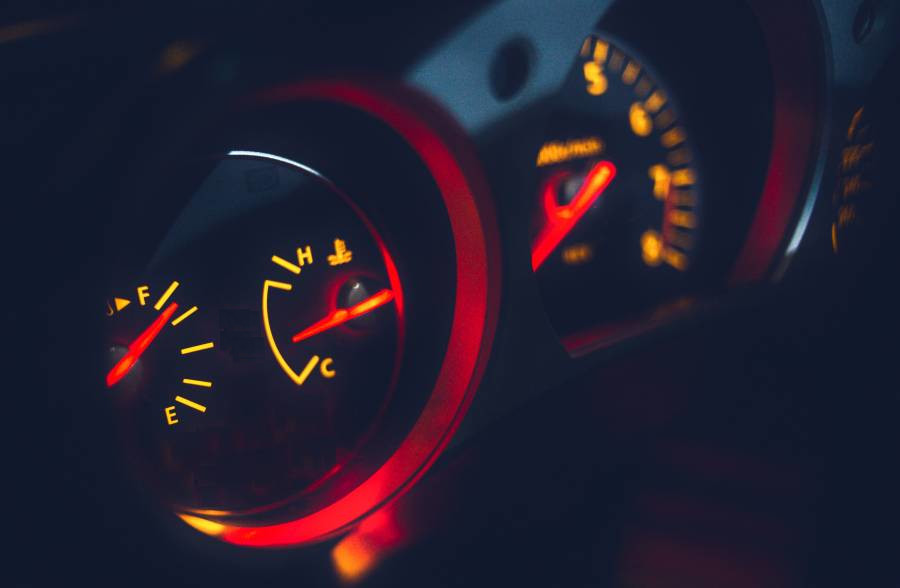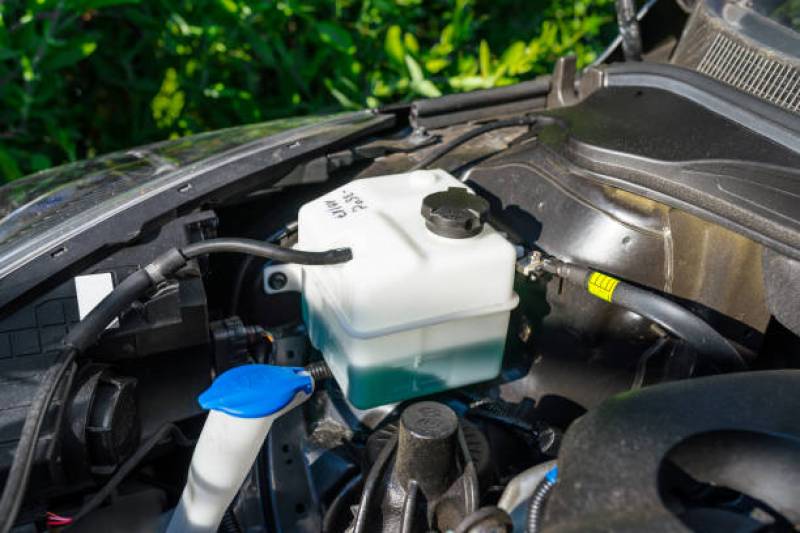Quick Navigation
Looking forward to the days ahead, and suddenly while driving, you notice that you have a flashing coolant light in your dashboard.
Not knowing the real reason behind this problem will lead you to a stop in your ride.
It would be best if you never disregarded any indication on the dashboard concerning the coolant temperature should.

Sometimes it’s not easy to tell what’s wrong until the issue has been diagnosed. Also, it will take enough knowledge to determine the cause and how to fix it.
If you are looking for a solution, then you’ve come to the right place. Below are some tips and tricks to handle coolant light flashing problems.
6 Common Causes Of Coolant Light Flashing
1. Coolant Level Sensor Problem
If your coolant light is flashing read continuously, it mainly shows that you have a problematic sensor that is not communicating with your computer system at that moment.
You should check your coolant temperature and level sensors to ensure that both components work.
If both devices are working, your next move is to remove the harness and inspect the sensor thoroughly for resistance.
Because whenever the coolant level is full, there shouldn’t be any resistance since the level is in a closed-loop system.
After inspecting, check the temperature sensor if it is cold and turn the engine on to check if it becomes heated.
The resistance should gradually change in this manner, and if the resistance on the temperature remains constant or doesn’t change, then both sensors must be replaced.
In many situations, the sensor is built into the coolant reservoir, necessitating the replacement of the whole reservoir.
Additionally, you may test the sensor by disconnecting the harness connection and bridging the two wires with a paper clip to see whether this turns off the light.
If not, then the issue isn’t with the level sensor anymore.
2. Coolant Level Low
Engine coolant is a combination of ethylene glycol and water.
Its task is to absorb heat produced by the car’s engine and move it to another area where it may be dispersed and restarted—generally, having a coolant light flashing means that you have a low coolant level on your car.
The coolant light will flash to alert you and avoid further engine damage if it goes under the threshold level.
Before you go anywhere or plan to travel to a faraway place, you should first check the coolant level, and filling it up is a standard operating procedure.
It would be best to do it frequently to prevent getting stranded in a deserted place.
Whenever you notice this warning sign, please don’t ignore it. Do not continue to drive and make a stop, for it might cause trouble in the end.
The worst case is if you need to go home, then you should check if your engine is overheating or not.
Make a stop-over and thoroughly check your engine but before that, let the engine cool down.
Check next to the coolant level, and if it tells you that it is low, you must add engine coolant to make it run again.
In an emergency, you may use distilled water to fill it up so that you can safely go to a gas station or any auto shop to buy a coolant refill.
Do make sure that you purchase the designated coolant for your car.
After starting the engine and allowing the coolant to warm up, the coolant level in the reservoir may increase enough to switch off the coolant light.
3. Overheating Engine
Another issue related to a coolant flight flashing is that you may have engine overheating issues.
Typically, the coolant temperature under typical drive conditions is 80 to 90 degrees Celsius.
It may, however, increase after a long climb in which the engine has been operating for a long duration.

Take note that the engine must be running for the coolant cycle system to function correctly, but in some cases, when the weather is too hot, overheating issues will occur, leading to a coolant light flashing.
When it happens, stop driving, for it will cause extensive and costly damages to the engine itself.
The engine may entirely freeze if you continue to use it even if you know it is overheating.
If we see an increase in temperature often and it reaches 100 degrees Celsius, then it might be time to have your car checked and examined.
4. Damaged Mechanical System
It is the worst possible case scenario for a coolant light flashing problem.
If you have previously checked the coolant vehicle and left it for a few more hours and the problem persists, then it’s more likely that you have a problematic mechanical component that has been damaged.
Mechanical system components such as the water pump, radiator, and belt components might be affected.
However, if everything looks good when checking, you might have a dry and cracked gasket.
If you are still left behind with questions, then to determine the specific reason for the coolant light flashing issue, contact a reputable mechanic right away to fix your coolant light flashing problem.
5. Faulty ECU
If your car is experiencing a coolant light flashing issue, this indicates a problem with the cooling system.
It might be a significant problem where the coolant is no longer flowing to the engine. It may be an issue within the electrical wires and connections in the cooling system.
A faulty ECU may produce a coolant light flashing issue in some cases.
Electrical devices like the ECU might encounter electrical trips and outages that may, in return, read the electrical signals wrong.
If you ever encounter this type of issue and don’t know about electrical wirings, it is wise to call an electrician or a mechanic to fix it properly.
6. Circuit Leaks
Circuit leakages are one of the reasons that you have an abrupt decrease of coolant level in your car’s system.
That’s when the coolant light flashing will enter because it will indicate that there might be leakages inside your cooling system.
Take note that whenever the coolant level dips and you are experiencing a temperature increase, that may be a sure call that there is a leak among your car’s cooling component system.
To ensure that you don’t have leaks in your car’s cooling system and avoid a coolant light flashing, regularly check and have scheduled maintenance of your car to ensure it is working correctly and prevent problems soon.
Final Thoughts
There are so many light indicators that have been integrated with today’s modern car, and some are more significant than others.
Coolant light flashing is one of them, for it can get you into serious trouble if being taken for granted.
If you ever face a problem like this, find the cause and solve it immediately.
If the issue persists, your last call is to get a reputable technician or have your car checked entirely in an auto-repair shop.
Remember that you must take quick action to prevent severe engine damage and costs.

Kevin has been hanging around cars and automobile magazines since he knew what a car is. He grew up in his father’s 1995 Mercedes E320 Wagon and Volkwagon Phaeton W12 2004. He rides his first car, a manual 1979 Porche 911SC.
Currently, he owns an Acura Integra GS-R. During his childhood, he showed a keen interest in how things actually work and fix them. This passion transforms into his eternal love for cars and bestows him an ideal position in one of the leading automobile companies; whenever he finds time, he takes out his Acura and opts for the longest possible route to find hidden wholesome pleasure in a road trip.
Want to read some of the articles written by Kevin? Head to our blog section to find out all the articles written by Kevin.






